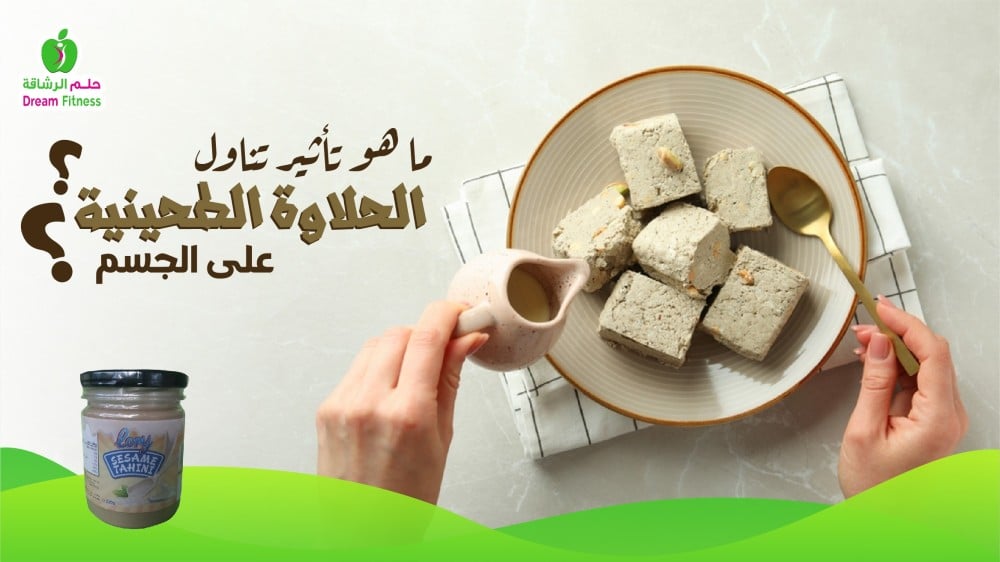It is called halvah (in Egypt And the Levant And Saudi Arabia ) or tahinia in Sudan or Levantine sweets (in the Arab Maghreb ) or Rahash (in the Arabian Gulf ) are among the types of sweets and popular foods in the Arab world and other countries. It is mainly made from tahini ( flour Sesame ) , sugar and sweetness. Nuts and dried fruits can also be added.
The manufacture of halva goes back to the era of Sultan Suleiman the Magnificent, the longest-reigning sultan in the Ottoman Empire, who had a private kitchen next to his palace, in which 30 types of sweets were prepared, including a type produced from sesame tahini.
The recipe was then transmitted to the Romans, who in turn transmitted it to Europe. It is the recipe that reached America in the early 20th century across the Atlantic Ocean. It also spread in the Middle East, the Mediterranean, Central Asia, and the Indian subcontinent, and in each country it moved to, its name and ingredients changed slightly.
Halva is one of the most famous types of popular sweets. It is considered a snack and eaten at the breakfast or dinner table. Halva contains an amount of sugar that provides the body with energy. It is also made from sesame seeds and sesame butter, which is rich in antioxidants and fatty acids.
Halva is a type of popular dessert in the Middle East and Greece. It is made from sesame seeds (tahini) with sugar and honey, and some nuts are added to it. It is an excellent source of energy and many nutrients.
What is the nutritional value of halva?
Tahini and halva have many health benefits. In fact, its benefits come from sesame seeds . 100% tahini is made up of ground sesame seeds while 50% of halva is made up of tahini. Sesame seed oil is known as the “king of oils.” In fact, sesame seeds are rich in two antioxidant compounds that give them and their derivatives their health benefits. One serving of halva contains 131 calories, 3.5 grams of protein, 17 grams of carbohydrates and 6 grams of fat, or about 9 percent of the daily value for fat. Only 1.2 grams of this fat is the unhealthy trans fat type, however, the rest comes from healthy trans fats. Halva also provides a small amount of fiber, with 1.3 grams, or about 5 percent of the DV.
While halva is not a good source of vitamins, it does provide significant amounts of a number of minerals. Each 1-ounce serving contains 17 percent of the DV for copper and phosphorus, 15 percent of the DV for magnesium and 12 percent of the DV for manganese. You need copper to form red blood cells, phosphorus and magnesium to form DNA, and manganese to heal wounds.
A cup (228 grams) contains:
- Calories from fat 121
- Calories 275
- 20% total fat 13 grams
- 35% equivalent to 7 grams of saturated fat
- 0 grams of trans fat
- 1 gram of polyunsaturated fat
- Monounsaturated fat 4.5 g
- 10% cholesterol 30 mg milligram
- 4% sodium 103 milligrams
- 13% potassium 443 mg milligrams
- 12% total carbs 35 g
- 9% dietary fiber 2.2 g
- Sugars 30 g
- 5.6g protein
- 23% Vitamin A
- 6.8% Vitamin C
- 13% calcium
Benefits of halva:
- Benefits of halva to increase energy
Halva provides the body with the energy needed to carry out daily activities and tasks. It also contains a percentage of protein and carbohydrates that help protect muscle mass.
It also contains elements that strengthen bones and muscles, such as magnesium and copper, which help strengthen muscles and reduce cramps.
- The benefits of halva for married couples
One of the benefits of halva for sex is that it contains antioxidants, which some studies indicate may help improve sperm motility and improve sexual performance.
- Benefits of halva for women
The antioxidants in halva, which comes from sesame butter and seeds, strengthen the immune system and improve the general health of women. The minerals in halva help improve bone and muscle strength and protect against fragility, especially in women after menopause.
- Benefits of halva for pregnant women
Large quantities of halva can be unsafe for pregnant women, so a doctor must be consulted first regarding the permissible quantity.
Benefits of halva include:
- Help strengthen immunity and protect against diseases.
- Providing the body with the necessary energy.
- Preventing osteoporosis, back and joint pain.
- Benefits of halva for breastfeeding
- Halva may help increase milk production thanks to its sesame content, in addition to providing the body with energy, reducing stress and fatigue, and helping to strengthen bones.
- Benefits of halva for children
Halva is a snack and dessert for children. Although it contains a lot of sugar, it remains a healthy option compared to other artificial sweets and flavorings of unknown origin.
It can be served to children as a form of dessert along with some nuts, and it gives them many benefits:
- It provides children's bodies with the energy needed to practice their favorite activities.
- It helps strengthen bones and muscles in children due to its calcium and magnesium content.
- Its antioxidants may help improve brain function and strengthen memory.
- Benefits of halva for weight loss
Some people believe that it only helps to gain weight, but it also helps to get rid of excess weight by:
- It helps the body increase the burning rate and also helps stimulate the metabolism.
- It provides the body with a large percentage of the proteins it needs in the person’s diet.
- It also provides the body with the energy that all muscles in the body need.
- It stimulates the digestive system to carry out digestion in a regular manner.
- References:
- https://www.demirbasmachine.com/benefits-of-halva
- https://www.livestrong.com/article/403760-is-halva-healthy/
- https://www.greenbalancedgal.com/is-halva-healthy/

